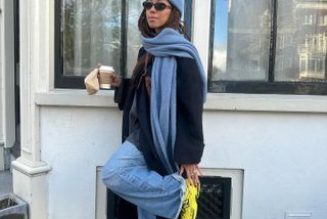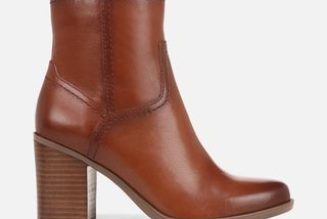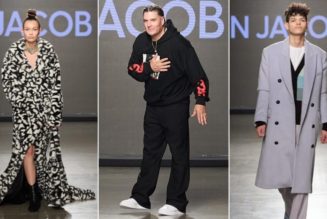
Foley & Lardner’s Jeff Greene and Matt Witsman delve into the key luxury cases affecting the fashion, apparel and beauty field this year
In the United States and around the world, 2023 is poised to provide us with a number of landmark decisions that will significantly affect all intellectual property – and particularly that of luxury brands. The US Supreme Court has already issued a major decision regarding fair use in copyright law and will also issue a decision on the First Amendment protections against trademark infringement claims.
Other courts, including US federal district courts and The Court of Rome are tackling other important issues in the space, including the responsibility of companies to protect consumer biometric information and trademark and copyright protections against third-party use of non-fungible tokens. As both the use of virtual try-on technology and the offering of non-fungible tokens have proven recently to be effective ways to connect with consumers, the landscape for luxury brand owners will continue to evolve with these decisions.
Andy Warhol Foundation for the Visual Arts, Inc. v. Goldsmith
The US Supreme Court recently determined that Andy Warhol’s portraits of the music icon Prince did not fall under US copyright’s fair use doctrine. An artists and photographer named Lynn Goldsmith photographed the now-deceased artist Prince in 1981 and licensed the portrait to Vanity Fair for their use in an article. Andy Warhol created 15 images from the same photo in Warhol’s pop art style. Vanity Fair reprinted one of the Warhol images in 2016 to commemorate Prince’s passing, which led to claims of copyright infringement filed by Goldsmith. Warhol’s foundation, in defence, argued that Warhol had transformed Goldsmith’s photograph to give it a new meaning and thus such use did not constitute copyright infringement under the fair use doctrine. The Second Circuit overturned the district court’s ruling in favour of the Warhol Foundation and held that the new work failed to transform Goldsmith’s original photograph because it was recognisably derived from the original photograph.
The Fair Use defence in copyright law permits third parties to use copyrighted works without an owner’s permission under certain circumstances. In determining fair use, courts review, among other things, the purpose and character of the allegedly infringing use by asking whether the new work sufficiently transforms the previous work, giving it a new meaning, message or purpose. The Supreme Court, in its decision, did not establish what exactly is transformative enough to protect a new work from copyright infringement claims. Instead, the majority determined that the Warhol Foundation’s licensing of the Prince photograph to Vanity Fair did not have a sufficiently different purpose compared to the photo taken by Goldsmith because both were “portraits of Prince used in magazines to illustrate stories about Prince.” In a dissenting opinion, Justice Elena Kagan shared her concerns regarding the consequences of the ruling for other artists and transformative fair use, stating “If Warhol does not get credit for transformative copying, who will?”
The majority opinion certainly narrows the scope of what qualifies as fair use while deftly avoiding defining what is required for transformative fair use. That being said, the majority’s focus on the similar commercialisation and purpose of Warhol’s image and Goldsmith’s photograph seems to leave the door open for the application of transformative fair use in situations where the derivative work is not similarly commercialised or used for the same purpose as the original work.
Jack Daniel’s Properties, Inc. v. VIP Products LLC
VIP Products manufactures dog toys and created a toy in the shape of a whiskey bottle named “Bad Spaniels,” with an alcohol content of “43% Poo by Vol.” and the words “The Old No. 2 on your Tennessee Carpet.” Believing that Bad Spaniels too closely resembled its iconic Jack Daniel’s Old No. 7 Tennessee Sour Mash Whiskey label, Jack Daniel’s brought claims of trademark infringement under the Lanham Act. The district court held that the toy – as a parody – was entitled to First Amendment protection. The US Court of Appeals for the Ninth Circuit affirmed and Jack Daniel’s filed a Petition for Writ of Certiorari with the Supreme Court.
Jack Daniel’s contends that the Lanham Act prohibits trademark uses, like VIP Products’ toy, which are likely to cause confusion, and that there is simply no heightened standard for artistic, humorous or expressive works. The Lanham Act only applies to expressive works if the trademark owner can establish one of the two requirements set forth in the Rogers v. Grimaldi test, which has long been used to balance the interests of trademark owners while preserving free speech under the First Amendment. The Rogers test, established by the Second Circuit in 1989, requires the trademark owner to show that the trademark is either (1) not artistically relevant to the underlying work or (2) explicitly misleads consumers as to the source or content of the work. The Rogers test however – according to those in support of Jack Daniel’s – was clearly created to shield the authors of expressive works from being significantly limited in their expression due to trademark rights and the test was not intended to be used in conjunction with consumer products like dog toys.
In late March, the Supreme Court heard oral argument in which counsel for VIP Products argued that its parody dog toy did not violate the Lanham Act because not only are consumers not confused but the parody dog toy is protected by the First Amendment as an expressive work. Counsel for Jack Daniel’s argued that the dog toy is not an expressive work because it is a consumer good. We can expect a decision from the Supreme Court later this year.
The implications of this case are sure to affect luxury brand owners in the United States. On the one hand, a rebuke or further limitation of the Rogers test would strengthen the rights of brand owners and curb the unauthorised use of valuable trademarks combined with products that arguably offer minimal artistic expression. Alternatively, a decision in favor of VIP Products could prioritise artistic expression and free speech over any perceived infringement. If the Supreme Court’s decision in Andy Warhol Foundation for the Visual Arts, Inc. v. Goldsmith is any indication, the Court will focus heavily and provide extensive commentary on whether the transformative nature of the Bad Spaniels dog toy saves VIP Products from trademark infringement.
The case has drawn the interest of several brand owners leading to the filing of amicus briefs by Constellation Brands, Inc. (owners of numerous beverage alcohol brands such as Robert Mondavi, Svedka and Corona), Campbell Soup Company, Levi Strauss & Co., Patagonia Inc., Campari America LLC, and Nike, Inc., among others.
Theriot v. Louis Vuitton North America, Inc.
In a stark reminder of the importance of compliance with individual state laws, Louis Vuitton North America faces a class action suit in the Southern District of New York alleging that it failed to receive the permission of consumers before they used its virtual try-on tool on its website. The tool – used increasingly by luxury brands to allow customers to virtually try on products to facilitate online shopping – collects and processes prospective consumers’ images to show them how a specific item would fit based on their facial geometry. The plaintiffs, which are Illinois residents, claim that Louis Vuitton North America, in allowing customers to virtually try on glasses, violated the Illinois Biometric Privacy Act by not providing written notice of the collection of consumers’ facial geometry, the purpose of the collection and the length of time of the data would be retained.
In response to the allegations, Louis Vuitton North America moved to dismiss the claims relating to the virtual try-on tool claiming that the facial recognition technology was developed by another company and that company is responsible for collecting the biometric information. The Southern District of New York, however, determined that the roles of each company in the collection of the biometric data is a factual question to be later determined after the pleading stage. Should the case proceed to decision, the Southern District of New York is in a position to provide clarity on the liability of luxury brands using third-party services.
Juventus Football Club S.p.A. v. Blockeras S.r.l. and Hermès International v. Mason Rothschild
Juventus FC, an Italian Serie A football club, won its trademark infringement suit in The Court of Rome First Instance against Blockeras, which produces NFTs of athletes. Juventus FC asked the court for a preliminary injunction preventing Blockeras from selling NFTs that made use of Juventus’ trademarks including JUVENTUS and JUVE, and the design of Juventus FC’s renowned white and black jersey. Blockeras’ defence was that the Juventus FC’s trademarks are not registered for downloadable goods and therefore the NFTs could not infringe Juventus FC’s trademark rights.
The court determined that Juventus FC’s marks are widely recognised given the fame of the club and therefore it was not necessary to consider their use on digital objects. Nonetheless, Juventus FC’s digital market presence via its extensive merchandising activity showed that Juventus FC used its marks in the digital world.
It is clear that European courts, such as the court in Rome, are recognising that existing trademark protection in the non-digital space can be sufficient to protect from unauthorised use in the digital arena so long as the trademarks are in use and well-known. This development may be key to protecting the rights of luxury brand owners in light of the emergence of NFTs and the metaverse.
The US did not have a similar decision on the issues in Juventus, until Hermès International v. Mason Rothschild. Mason Rothschild launched an NFT collection titled ‘MetaBirkins’ that featured furry renderings of Hermès’ iconic Birkin handbag. In response, Hermès sent a cease and desist letter and filed suit in the Southern District of New York alleging trademark infringement, false designation of origin, trademark dilution and cybersquatting. Rothschild filed two unsuccessful motions to dismiss asserting First Amendment arguments that the depiction of fur in the MetaBirkin NFTs “comments on the animal cruelty inherent in Hermès’ manufacture of its ultra-expensive leather handbags,” and that his “fanciful depictions” met the “low threshold of minimal artistic relevance” and were not misleading. Both motions to dismiss were denied, as were both parties’ motions for summary judgment.
The jury, after a weeklong trial, applied the Rogers test and found that although the MetaBirkin NFTs met the low threshold of being artistic expression, Rothschild’s use of the BIRKIN trademark was explicitly misleading. Consequently, Rothschild was liable for trademark infringement, trademark dilution and cybersquatting and an award of $133,000 in damages for Hermès. Following the verdict, Hermès filed a motion for permanent injunctive relief requesting that Rothschild relinquish to Hermès all materials related to the MetaBirkins collection alleging that Rothschild continued to promote the MetaBirkins collection despite the verdict. Rothschild, in response, filed a renewed motion for judgment as a matter of law or a new trial claiming that the court’s instructions to the jury were improperly structured by unjustifiably focusing on Rothschild intent to confuse consumers, resulting in prejudice to Rothschild.
The decision sets the stage for the enforcement of intellectual property rights with respect to digital assets and NFTs, and establishes important guidelines for artists seeking to incorporate third-party trademarks in NFTs. As evidenced by the post-trial activity, however, neither party is going down without a fight.
Yuga Labs, Inc. v. Ryder Ripps, et al.
A blockchain technology company specialising in digital collectibles has filed suit against an artist named Ryder Ripps in the Central District of California, alleging that Ripps misled consumers into purchasing NFTs that contained original Bored Ape Yacht Club images and trademarks. Ripps allegedly used the same images created by Yuga Labs and promoted the collection by using a number of Yuga Labs’ trademarks. Since the Bored Ape Yacht Club trademarks are unregistered, Ripps claimed that Yuga Labs had no rights in the trademarks.
Ultimately, however, Yuga Labs prevailed in the majority of its summary judgment motion and the Central District of California found that Ripps had infringed the Yuga Labs trademark and did so intentionally. The Central District of California determined that Yuga Labs owns the Bored Ape Yacht Club trademarks for the NFTs because they are a virtual good used in commerce.
The decision in favour of Yuga Labs sets the foundation for the recognition of common law trademark rights in the United States through use in conjunction with NFTs.
Jeffrey Greene is a partner with Foley & Lardner LLP based in the firm’s New York office where he is a member of the Intellectual Property Department and co-chairs the Fashion, Apparel, and Beauty Industry Team. He can be reached at jgreene@foley.com. Matthew Witsman is an associate and intellectual property lawyer, based in the firm’s Chicago office, where he is a member of the firm’s Trademark, Copyright & Advertising Counseling Practice. He can be reached at mwitsman@foley.com.









